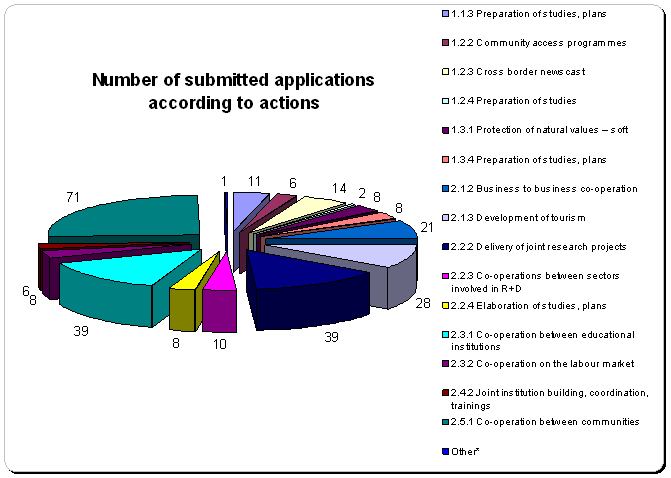| 1 | 2 | 3 | 4 | 5 | 6 | 7 |
| 8 | 9 | 10 | 11 | 12 | 13 | 14 |
| 15 | 16 | 17 | 18 | 19 | 20 | 21 |
| 22 | 23 | 24 | 25 | 26 | 27 | 28 |
| 29 | 30 | 31 |
Home
Downloads
2014+
| 1 | 2 | 3 | 4 | 5 | 6 | 7 |
| 8 | 9 | 10 | 11 | 12 | 13 | 14 |
| 15 | 16 | 17 | 18 | 19 | 20 | 21 |
| 22 | 23 | 24 | 25 | 26 | 27 | 28 |
| 29 | 30 | 31 |
Cold winter could not impede applications from pouring in to the JTS office in Budapest during the last days of January and the beginning of February. Mountains of projects were received and handled during those snowy days.

The third call of proposals has been officially closed on 22 January 2010. As a result, an impressive number of 280 applications arrived to the JTS, demonstrating once again the great interest for co-operation in the Hungarian-Romanian border area.
All the received applications were already carefully checked in order to ensure their administrative compliance (submission criteria and formal compliance check) with the Programme requirements. Notification letters on this phase of the evaluation process are sent out to applicants via fax and e-mail. In some cases, the applicants were requested to complete their application.
Following this, projects found admissible will enter into the quality assessment phase, when independent external assessors will carry out the content and quality assessment of the applications submitted under this call.
Based on the results of the assessment, the Joint Steering Committee (JSC) will debate and take the final decision on projects to be approved and the amounts to be granted. The JSC is a joint body set up within the Programme, being responsible for the selection of projects to be financed. Its members are representatives of national and local level institutions and organisations form both countries participating in the Programme.
Applicants will be notified on the results of their applications after the decision. Nonetheless, the implementation of projects may be started, on the risk of the applicants, already after their submission. The list of selected project will be, as before, published on the Programme website together with the amount granted, once they become available.
Once the selected projects are contracted, they will receive guidance and assistance with the implementation of their projects, either during Lead Partner Seminars or other similar events, as well as during personal consultations with their designated Programme managers.
The launch of next call for soft projects is foreseen for the fall of 2010.
Facts and figures on the 3rd call
With this call the interest towards the Programme was notably higher while the ratio of the Hungarian and Romanian Lead Partners became much more balanced than during the first Call for Proposals (HURO/0801) launched back in 2008. In addition, we could notice that the number and gravity of mistakes made by applicants was considerably reduced.
| HURO/0801 | HURO/0901 |
| Available ERDF | |
| 16,75 million € | 20, 76 million € |
| Requested ERDF compared to available | |
| 1,88 bigger (31,47 million €) | 2,36 bigger (49,01 million €) |
| Number of Hungarian and Romanian Lead Partners | |
| 149 Hungarian 48 Romanian |
170 Hungarian 110 Romanian |
The possibility to opt between submitting the applications in English, or in a Hungarian-Romanian, bilingual form was introduced with experimental character in this call. As a result, more than half of applicants opted for submission in English, thus 51,48% (144 applications) of the applications were submitted in English and 48,57% (136) applications submitted in Hungarian-Romanian.
Which areas of interventions were most popular?
Similar to the previous call, action 2.5.1. Co-operation between communities attracted the highest number of applications (more than 71). Actions 2.2.2 Delivery of joint research projects and 2.3.1 Co-operation between educational institutions proved to be equally popular, each attracting a number of 39 applications.
A high number of project proposals were submitted in the areas of tourism development (action 2.1.3 – 28 applications) or business to business co-operation (action 2.1.2 – 21 applications).

What is the distribution of Lead Partners in the 8 eligible counties?
19% of the Lead Partners are from Csongrád county, while 18-18% from Hajdú-Bihar and Bihor counties. Within this call, Arad counties and Satu Mare counties submitted the smallest number of applications.
